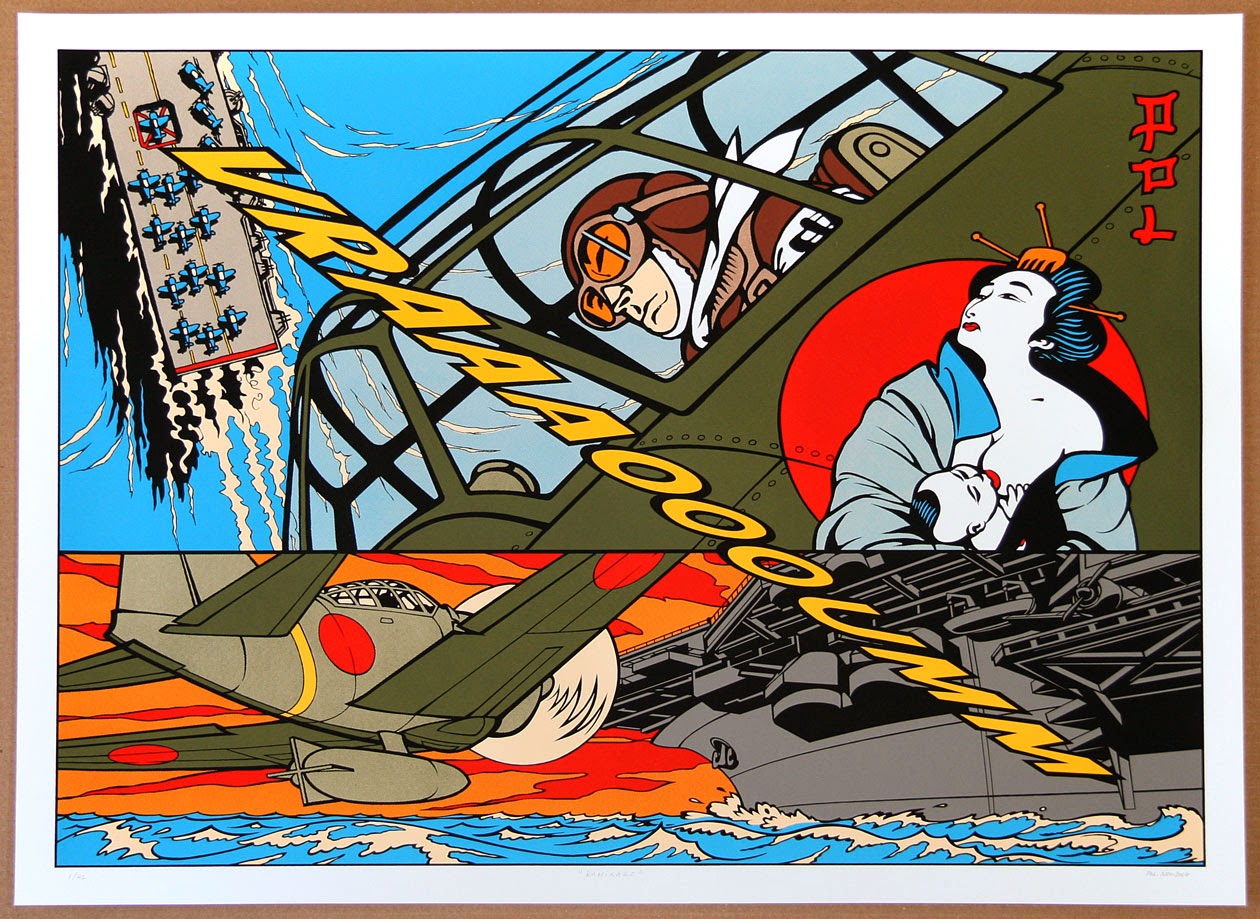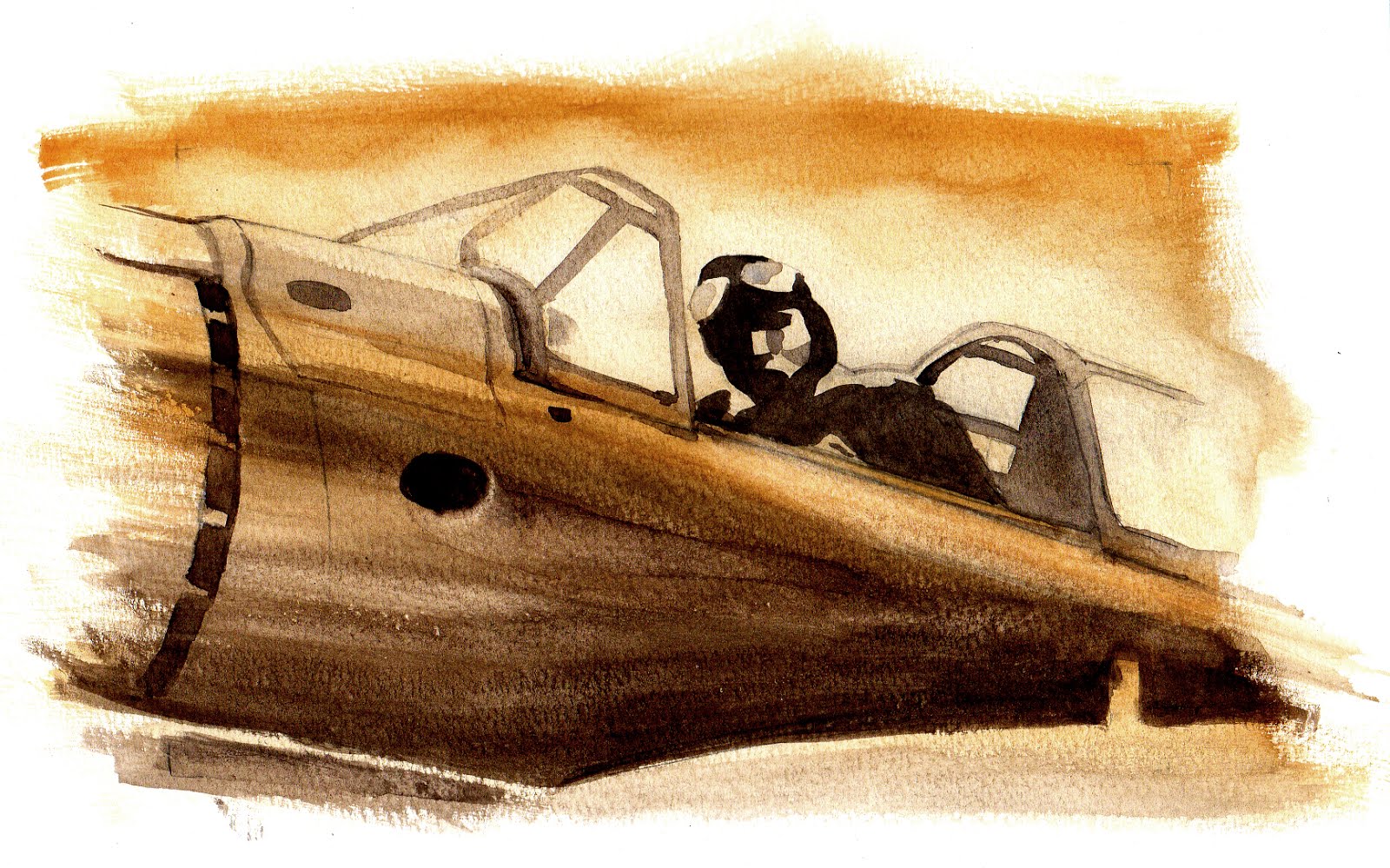 |
| KAMIKAZE print # 1 / 42 |
I was really interested in doing a silkscreen print series of my work Kamikaze, I wanted to give the piece a vintage cartoon of the sixties look by adding halftones dots. By doing so the prints have a different feel than the painting, they have their own originality, and secondly my art is more accessible financially to collectors. I finally found a print shop with enough expertise to handle a manual silk screen limited print job with halftones on large sheets of paper, quite a challenge looking at it retrospectively.A few things I’ve learned about artist prints that I would like to share:
When we talk about silk screen printing
there is a distinction to make from the hand made and machine/industrial
process:
a machine print is generally used for large series or big formats, as
all the parameters are mechanical, usually the result is that every print is
identical and the registration of colors is perfect throughout the series. On
the other hand, when the prints are hand made, each print is unique because the
strength used on the squeegee to spread the ink through the stencil varies
from
each color step, the alignment markings are more random from one print to
another as the color spreads differently on the paper, same thing for the gain
dot of the halftones. The result depends a lot from the skills of the printer.
Also the bigger the paper is the bigger the challenge. A big format hand made
series can’t really exceed 80 to 100 prints and if you seek for perfection 50
is a max.
As speaking about value, no doubt to say that a
limited and signed handprint is more valuable than a machine one. A machine
series exceeding 200 prints can’t be signed by the artist, some say, it is more
like a commercial standard printing, each print being identical.
 |
| Halftone detail |
Also not to be underestimated that the hand
made silk screen printing gives more possibilities for the artist to give is
input on the final result, the control steps being more numerous and spread in
time.
The right way to sign an artist print
By
the early 1900s the traditional way is to sign and number prints at the bottom
of the image on the original paper, in pencil (6H). A pencil mark cannot be
reproduced by computers, making it less vulnerable to fraud. The signature will
be on the lower right and the numbering on the left.
The title is in the
center.
The numbering shows both the number of the print (the fist number) and
the total number of impressions in that particular edition (second number).
See
examples below
 |
| Print numbering |
 |
| title caption |
 |
artist signature
|
Of
course, there will be some additional prints in excess of the numbered edition,
which are not considered part of the edition. These are: trial proofs,
printer's proofs (PP), artist's proofs (AP also known as épreuve d'artiste, or E.A. and or H.C. (hors commerce that in French
means not to sell).
Today it
is generally admitted that an Artist Proof is a good impression of the finished
work that is identical to the numbered copies. It is often numbered with Roman
numerals and should not exceed 10% of the total number of the edition.
See
example below
 |
| artist print |












